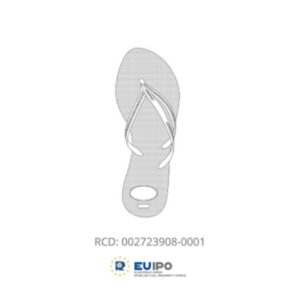Leidseplein Beheer B.V. and Hendrikus Jacobus Marinus De Vries v Red Bull GmbH and Red Bull Nederland B.V. Case C-65/12
Red Bull brought proceedings against Bulldog on the basis that they have taken unfair advantage of the distinctive character or reputation of their mark without ‘due cause’. This lead to the need for clarification of what constituted ‘due cause’. Ironically the only similarity, with regard to trade marks, between the products was the use of the word ‘bull’ as they are not identical and display different images.
Red Bull are a manufacturer of energy drinks and own the Dutch work and image trade mark ‘Red Bull Krating-Daeng’. Red Bull has continually attempted to prevent a Dutch individual from manufacturing and distributing an energy drink with the sign ‘Bull Dog’. However shortly after Red Bull commenced proceedings against the respondent it came to fruition that the Dutch man had owned the mark for years but had only recently starting selling in the energy drink market.
The issue was referred to The European Court of Justice where they were asked to clarify how Article 5(2) of Directive 89/104/EEC should be interpreted by asking whether it can be interpreted as meaning that there can be due cause within the meaning of that provision also where the sign that is identical or similar to the trade mark with a reputation was already being used in good faith by the third party/parties concerned before that trade mark was filed?
Advocate General Kokott proposed the following judgment:
‘When assessing whether a third party who, without due cause, uses a sign similar to a well-known mark takes unfair advantage from the distinctive character or the reputation of that well-known mark within the meaning of Article 5(2) of Directive 89/104/EEC … the fact that the third party has already been using that sign in good faith for other products or services prior to the mark with a reputation having been filed or having acquired its reputation, should be taken into account and favour the third party.’(Unofficial translation)
In the Advocate’s analysis she recognised that the primary issue was the translation of Article 5 (2) of Directive 89/104/EEC into different languages as this effected how restrictive the Article was interpreted. The Benelux concept of ‘due cause’ should have been interpreted in accordance with the concept of ‘due cause’ found in Article 5(2) of trade mark law Directive 89/104 (now Directive 2008/95). However, it was not clear from the CJEU’s ‘keyword advertising’ judgment in Case C-323/09, Interflora that the EU’s concept of ‘due cause’ was in and of itself broader than the Benelux-concept of ‘due cause’ in circumstances, such as these, where the sign was being used in a trading name and in good faith before the registration of the mark with a reputation.
Accordingly, the Dutch translation of the Directive referred to ‘due cause’ as the need to have a ‘valid reason’ whereas in other languages such as German, the phrase ‘due cause’ was not interpreted in such a restrictive manner. It was therefore necessary for the Advocate to find mutuality between the different interpretations of Article 5 (2). She considered that the various interpretations were suggestive of the word ‘use’ being sufficient in that if the ‘use’ was based on a legitimate interest, it may offset the interests of the trade mark proprietor.
When considering an infringement offence contrary to Article 5 (2) it necessary to take into account: the extent of the reputation and the scale of distinctive character; the similarity between the trade marks; the nature of the goods and services concerned; and the degree to which they are related. There are general principles that apply to trade mark infringement. These are: the greater the distinctive character and reputation of that trade mark, the easier it will be to find infringement; the more suggestively the mark is used, the greater the likelihood the sign was used and therefore taken unfair advantage of; and if goods are in direct competition which each other, where they are the same goods, consumers are likely to associate or confuse the products.
The Advocate thought that the respondent could rely on the principle recognised in EU law of protected acquired rights to justify the use of the sign for an alcohol-free energy-drink and when deciding whether a legitimate interest exists, the use of the sign should be taken into account. Using the trade mark ‘Bulldog’ to sell energy drinks could therefore ride off the coat tails of the Red Bull mark, thus giving it giving it reputation and status as consumers are more likely to associate Bulldog with Red Bull than the Dutch respondents marked name ‘De Vries’ or ‘Leidseplein Beheer’. His interests are therefore not substantial enough to nullify the possibility that the reason he started manufacturing energy drinks was following Red Bulls success.
Advocate General Kokott concluded, when assessing whether the use of a sign without due case takes an unfair advantage of the distinctive character or reputation of a well-known mark, the referring court should take account of each of the above factors.
Article By Rachel Pellatt











